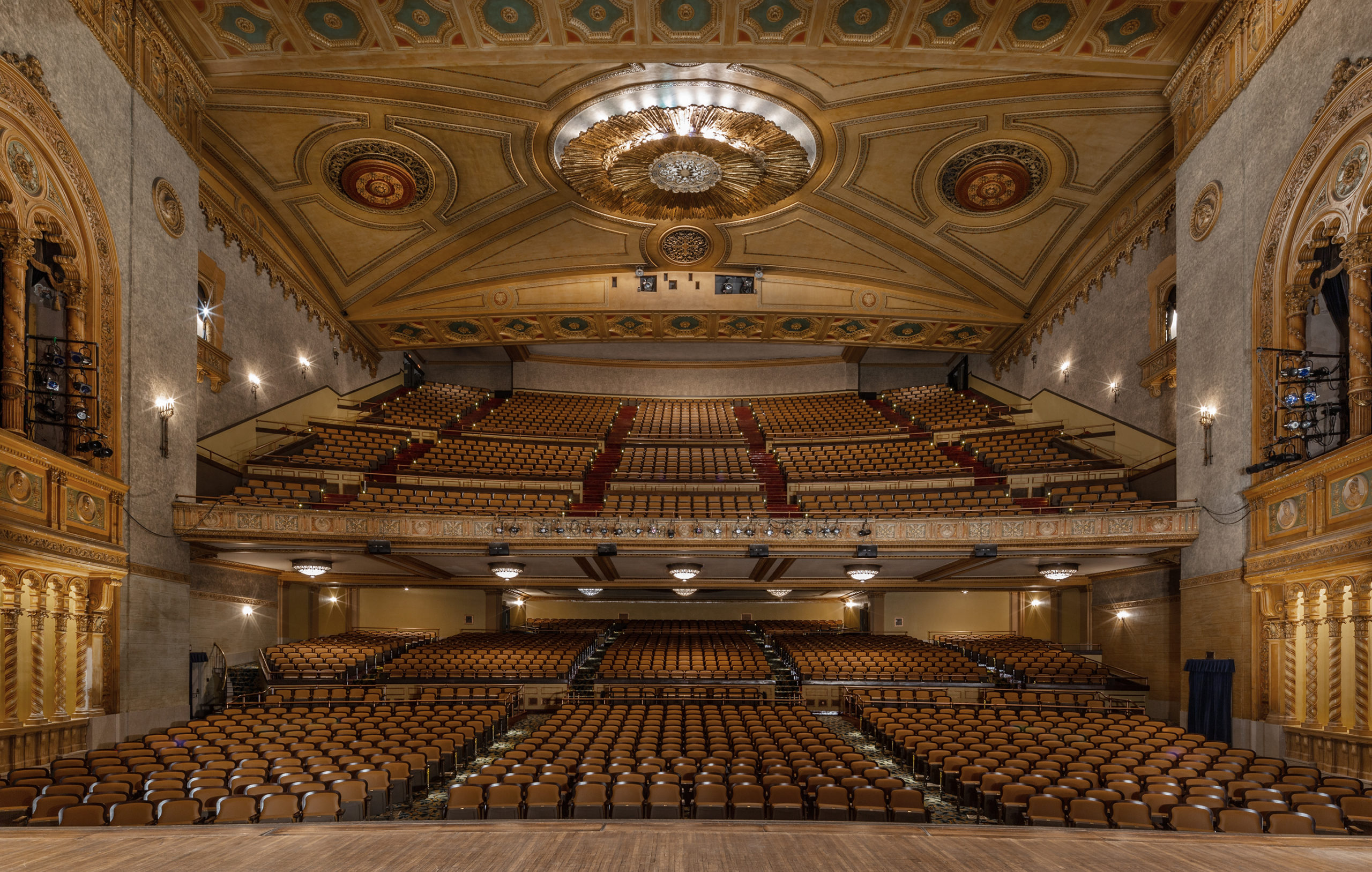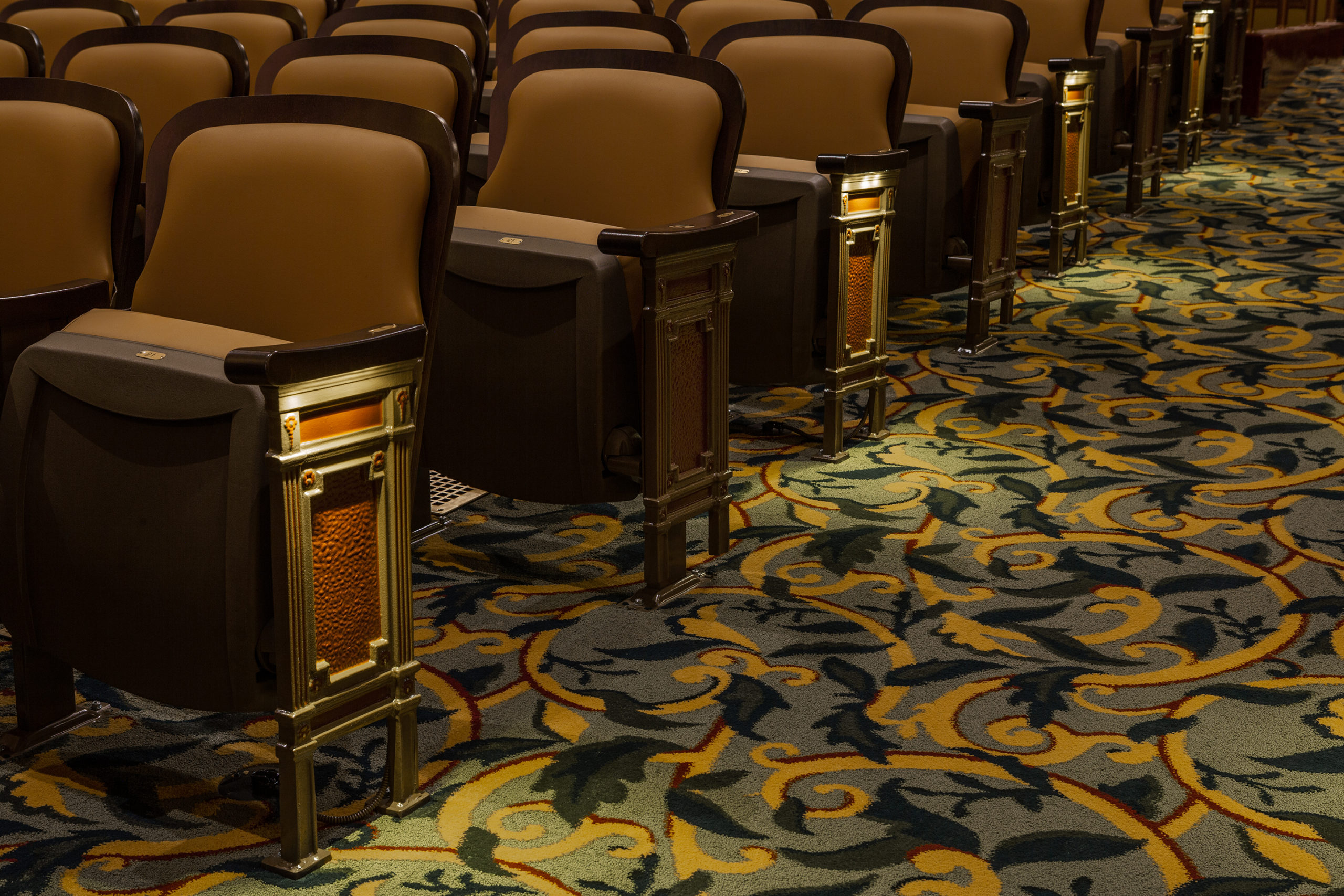




Public Auditorium opened in 1922 as part of the Burnham Plan for Cleveland. The Music Hall is part of a 1928 addition to the original structure, added to the south side of the building, designed by Frank Walker (Walker and Weeks) and architects from the City of Cleveland, Frederic H. Betz and J. Harold McDowell. While there are other spaces housed within the addition, the Music Hall was constructed specifically for musical performances and boasted a 3,000-seating capacity with space for a full orchestra.
Abutting the original Public Auditorium venue, the Music Hall was constructed off the stage side of the original Public Auditorium space, creating a unique double-sided stage. The same stage serves the larger Auditorium and the smaller Music Hall.
The interior of the Music Hall exhibits elements of Romanesque and Baroque high classical revival styles. The space is adorned with expertly crafted marble, travertine, and textured plaster walls and ceilings. The floor, both inside and outside of the theatre, is comprised of elaborately patterned carpet, terrazzo, and painted concrete and the proscenium arch is adorned with a dense array of plaster acanthus leaves and scallops.
The space suffered severe water damage when a rooftop HVAC unit failed and flooded the hall from the top down, creating an opportunity for the City of Cleveland to restore and recreate the original historic features.
The project scope included new historically appropriate seating and carpeting to be recreated from original photos; updates to accommodate ADA requirements; new tech platform area; expanded orchestra pit configuration and function; restoration of plaster walls and ceilings; new draperies; and electrical and HVAC repairs. The work was a balance between restoring and recreating important lost and damaged historic features, while adjusting the space to accommodate ADA requirements and modern technology.